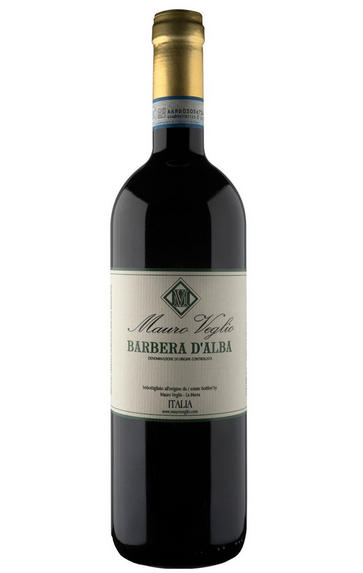
2022 Barbera d'Alba, Mauro Veglio, Piedmont, Italy
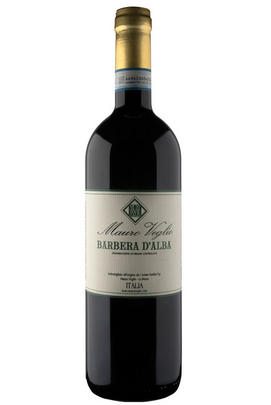
About this WINE
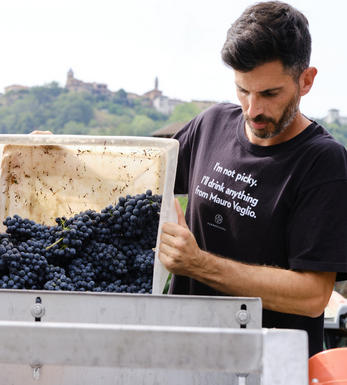
Mauro Veglio
Mauro Veglio is situated in the hamlet of Cascina Nuova, near the road that winds down from La Morra. It was founded in the 1960s, when Angelo Veglio bought his first vines in Gattera. In ’79, the family moved to Cascina Nuova, which came with five hectares of vines including holdings in the crus Arborina and Rocche dell’Annunziata. In ’86, Angelo’s son Mauro took over. His marriage in ’87 added holdings in Castelletto, Monforte, to the estate. In 2017, a family alliance with Mauro’s nephew Alessandro – already running his own winery – brought a further five hectares in Gattera and Paiagallo. Today, the estate spans nearly 30 hectares. Leading modernist Elio Altare’s winery is across the yard; he was a strong influence in Mauro’s early days. But under Alessandro’s vision, there is greater flexibility: less accent on extraction and more ageing in larger barrels, although barriques are still used judiciously.
This is Alessandro’s first vintage for his Serralunga project, which enhances both his Classico blend and introduces his Commune di Serralunga. Now, he has Barolo offerings from four of the region’s communes. He has also acquired three hectares of the white Timorasso grape in Tortona, as well as a little more land in Paiagallo from 2023, making his ambition evident. The clear yet defined tannic structure of the 2019 vintage has encouraged him to further reduce the percentage of new oak in the crus where it is used, and botte are again more to the fore. It was also interesting to note that the wines aged in barriques appeared more open, compared to addresses where the wines had been slower to evolve in botte..
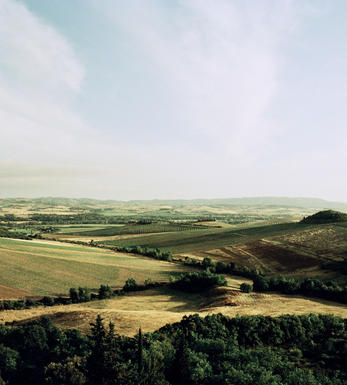
Barbera d'Alba
Barbera d’Alba is a red wine made from the Barbera grape variety in the Alba region of Piedmont, Italy. It is one of the most well-known and widely produced Barbera wines in the Piedmont region and holds the prestigious Denominazione di Origine Controllata (DOC) designation.
The grape is a high-yielding variety known for its rich colour, high acidity, and low tannins. These characteristics make Barbera wines generally approachable and food-friendly, often described as lively, vibrant, and easy to drink.
The wines typically showcase red and black fruit flavours, such as cherry, raspberry, and blackberry, with some expressions exhibiting notes of plum and blueberry. The wines often have a pleasing acidity that gives them a refreshing and tangy quality. In some cases, subtle hints of spice, earthiness, and floral aromas may add to the wine’s complexity.
The oak ageing process is typical for many Barbera d’Alba wines, which can impart additional layers of flavour and texture, complementing the grape’s natural characteristics. However, some producers opt for stainless steel or neutral oak ageing to preserve the wine’s primary fruit flavours and freshness.
Barbera d’Alba is versatile when it comes to food pairings. Its bright acidity and medium body make it a fantastic match for various dishes. It pairs excellently with Italian cuisine, such as pasta dishes, risotto, pizza, and roasted meats. The wine’s acidity also allows it to pair well with more decadent and fatty foods, making it an excellent choice for savoury dishes.
While Barbera d’Alba is often overshadowed by the more renowned Barolo and Barbaresco wines of the Piedmont region, it remains a beloved and cherished wine among locals and enthusiasts. Its combination of approachability, versatility, and excellent value makes it an appealing choice for everyday enjoyment and a delightful introduction to the wines of Piedmont.
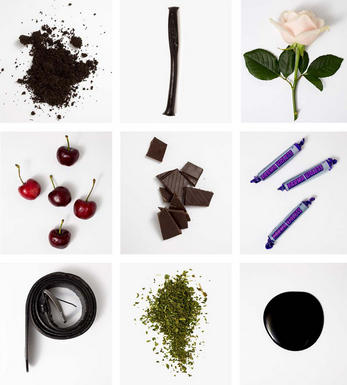
Nebbiolo
Nebbiolo is the grape behind the Barolo and Barbaresco wines and is hardly ever seen outside the confines of Piedmont. It takes its name from "nebbia" which is Italian for fog, a frequent phenomenon in the region.
A notoriously pernickety grape, it requires sheltered south-facing sites and performs best on the well-drained calcareous marls to the north and south of Alba in the DOCG zones of Barbaresco and Barolo.
Langhe Nebbiolo is effectively the ‘second wine’ of Piedmont’s great Barolo & Barbarescos. This DOC is the only way Langhe producers can declassify their Barolo or Barbaresco fruit or wines to make an early-drinking style. Unlike Nebbiolo d’Alba, Langhe Nebbiolo can be cut with 15% other red indigenous varieties, such as Barbera or Dolcetto.
Nebbiolo flowers early and ripens late, so a long hang time, producing high levels of sugar, acidity and tannins; the challenge being to harvest the fruit with these three elements ripe and in balance. The best Barolos and Barbarescos are perfumed with aromas of tar, rose, mint, chocolate, liquorice and truffles. They age brilliantly and the very best need ten years to show at their best.


Buying options
Add to wishlist
Description
This Barbera d’Alba is produced from rented vineyards in Madonna di Como, above Alba and Canale in Roero, with some estate fruit from Annuziata and Gattera. The rented vines are younger and planted on the warmer sites. This is plush, juicy and very appealing, with plenty of warm, ripe fruit but still with a defining curl of freshness. This is a major cuvée for Alessandro, and is as assured as ever.
Drink 2024 – 2029
Mark Pardoe, Wine Director, Berry Bros. & Rudd
wine at a glance
Delivery and quality guarantee